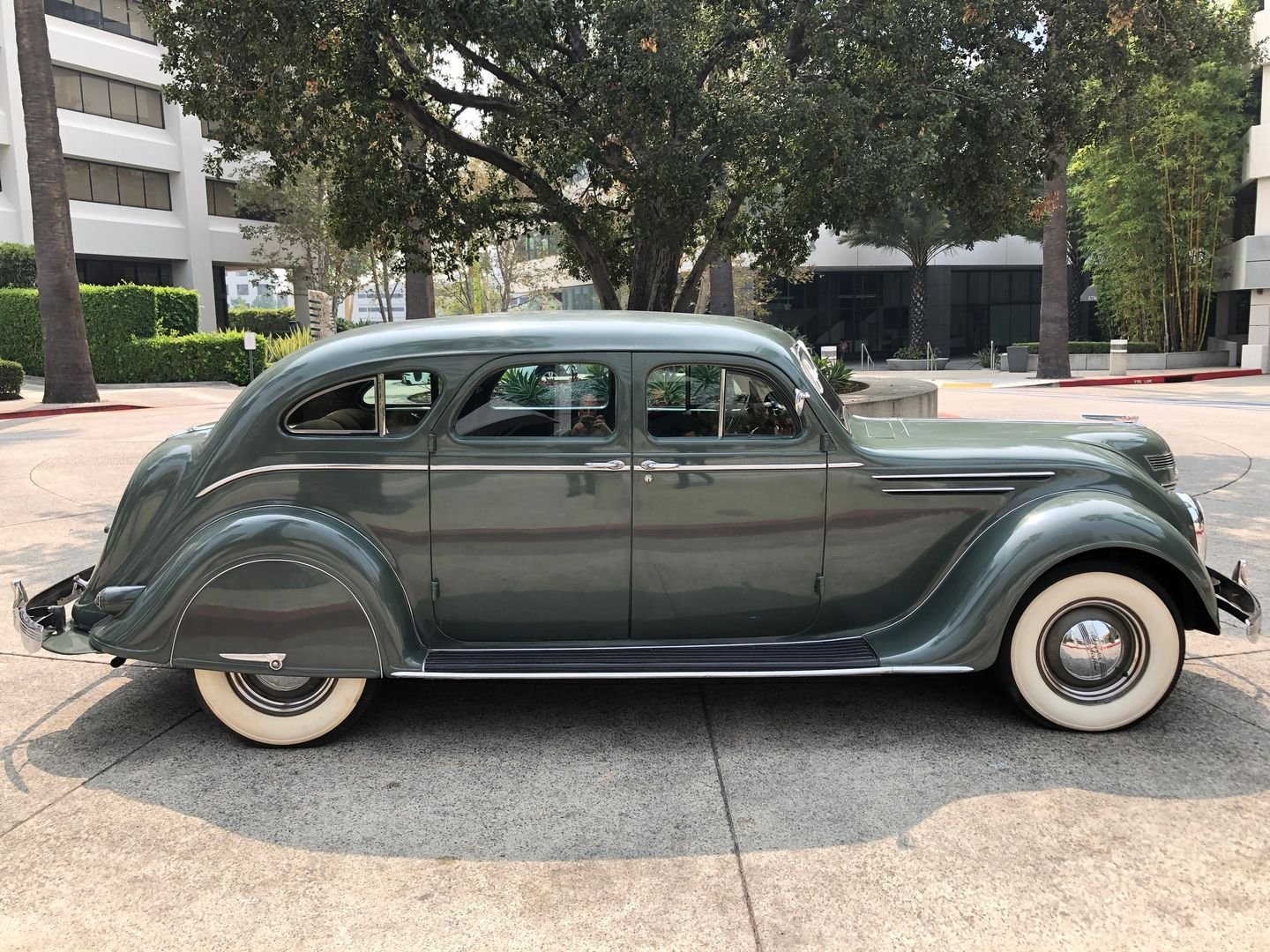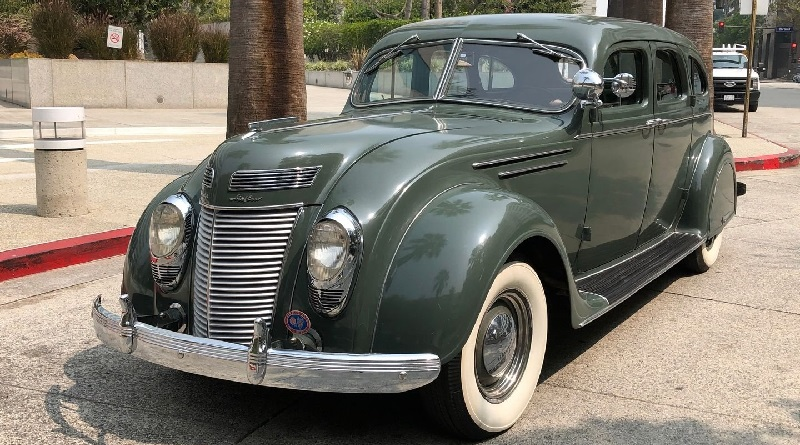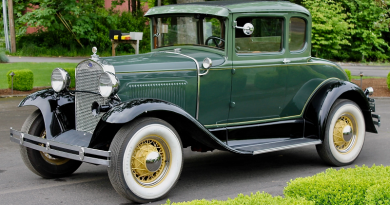1937 Chrysler 8 Airflow C14
The Chrysler Airflow is a full-size car produced by Chrysler from 1934 to 1937. The Airflow was the first full-size American production car to use streamlining as a basis for building a sleeker automobile, one less susceptible to air resistance. Chrysler made a significant effort at a fundamental change in automotive design with the Chrysler Airflow, but it was ultimately a commercial failure due to a lack of market acceptance and controversial appearance.

In its 1937 final year, the Airflow was reduced to one model, the Airflow Eight, offered as a two-door coupe and four-door sedan. A total of 4,600 units were produced before the program was cancelled. Flat dashboards with recessed controls, soft door handles, and padding on the back of the front seats were new safety features.

The car was powered by an inline L-head, eight-cylinder engine with a cast-iron block, 273.8 cubic-inch displacement size, and breathing through a Stromberg 2V model EE-22 carburetor. It used a manual synchromesh three-speed transmission, floor shift controls, conventional clutch, shaft drive, a hypoid rear axle, four hydraulic brakes, steel spoke wheels and riding on a 121-inch wheelbase.






